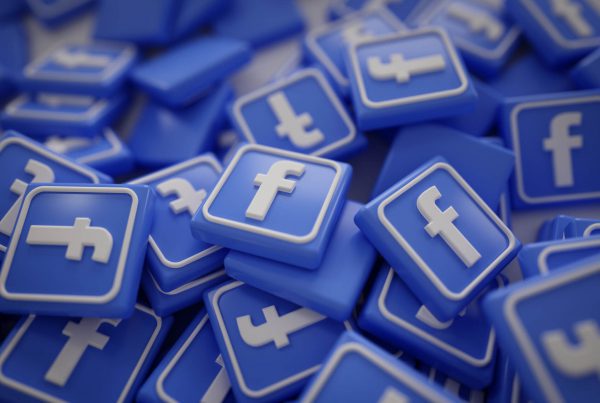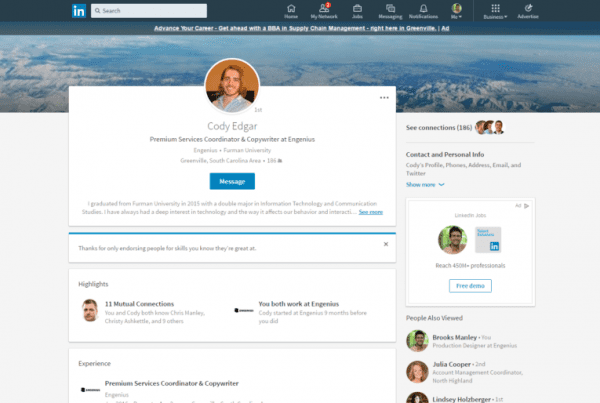I am very much smack dab in the middle of the Millennial generation that has grown up in the transition from analog to tech. I had a walkman cassette player with the latest Hanson soundtrack on my NOW 3 mixtape.
I waited by the boombox with the radio on to record my favorite songs on a tape (yes an actual tape) after calling the radio station for “all request Thursday.” I learned the Dewey Decimal System with a card catalog and remember someone coming to our school to tell us about this crazy thing called “THE INTERNET.” I also remember this new-fangled internet, with its crazy fax-sounding dial tone constantly being interrupted so my mom could call my aunt, being associated with “You Got Mail” and Instant Messenger.
Being able to have conversations with anyone and everyone instantaneously was and is a game changer.
Instant Messenger is how I first hit on my now wife back in high school – but that is neither here nor there – the point is that the internet was invented for communication, conversation and information. That is why everyone that had a MySpace moved to Facebook then to Twitter then jumped onto Instagram, tried out Snapchat, and is now on TikTok. We crave human conversation.
This principle doesn’t change when customers are interacting with your business online. Social platforms allow consumers to have a voice in a world where that wasn’t really possible before.
Think about it, in 1998 you go to a store and buy something. It breaks immediately, you could go back to the store and switch it out if you were convincing enough to the teenager working behind the counter…but that’s where the conversation ended.
Now every consumer has a voice – and some with rather large reputations and followings. They expect to be heard, acknowledged, and treated respectfully. They also expect your business to be human, which gives you a rather unique advantage you didn’t have in the past.
Speak to Customers When They Want to be Spoken To
Back to analog, how many times have you walked into a department store and been bombarded by salespeople asking if you want to try the latest cologne/perfume? The truth for me is, I am NEVER buying cologne, stop please don’t waste your time. I know they’re just doing their job, but their tactic isn’t reaching the right person.
I recently saw that Sephora was innovating in their brick-and-mortar stores to help their employees easily identify which customers were raising their hands for help and which ones were wanting to shop with complete independence.
There is a fellow introvert on the Sephora customer experience team who deserves A RAISE RIGHT NOW pic.twitter.com/4Aan7lUyVD
— Cami Williams (@cwillycs) November 4, 2019
The innovation was simple, if you are a customer and want to shop without being approached, you select the black basket to shop with. If you want assistance in making your purchase you took a red basket. Pretty simple system but if someone had a red basket, the employee knew they were talking to someone who truly needed their product and their help.
This is what social media can do for your company. It is a tool, a system, a platform – and you and your employees are the secret sauce to solving your customer’s problems. Customers self-identify on social media when they are asking you a question, filing a complaint, or making themselves known. They are holding the red basket.
Even if they had a negative experience, they are giving you the forum to talk it out and answer their questions versus the old alternative which was to never give your company another chance. Moreso, you are able to take your company – which can feel very sterile – and make it extremely unique to their situation. In short, you make your company and your brand feel relatable and human. Now, that many companies are shifting to remote work, this is more important than ever before.
Different Channels for Different Conversations
Not all social media platforms are built for the same conversations. You wouldn’t text someone you have been dating a long-time that you are breaking up – I mean you could, but dang, that’s cold. That is a face-to-face conversation or at minimum a video call right?
The same is true for social platforms. It is important to know how you should come across on each platform and what is the best way to interact with your customers. I’ll cover some of the big ones, but know that there isn’t a universal list of rules to social, it is still the wild wild west, and it changes every day.
Facebook has one of the broadest reaches of people, although it does trend toward an older demographic. Facebook is also one of the most versatile platforms in the number of ways you can have conversations with prospective and current clients (Facebook messenger, on post comments, directly on a newsfeed, through video, through live video).
You have the ability to address someone publicly on a company page, or privately message them to take their concern offline. Depending on the interaction will determine how you address this with your guest as they may have a complaint that you want other future visitors to see how your company addressed it or if it is more of a one-off, have a more private conversation.
Customers also have the ability to leave your company a review and comment, which can be picked up by search engines. Reviews and comments can be monitored by reputation management software so you can act on them before they go public if you so desire.
Twitter is the news and gossip mega hub of social media. It is the fastest moving of the social platforms. A user spends 2.7 minutes on Twitter daily, and 79% of users retweet small businesses and are engaged with SMBs.
This makes this platform extremely nimble. If you and your company are going to be on Twitter, be ready to read and react quickly as that is the expectation of the platform.
Instagram is a tale of two platforms now. You have the traditional Instagram post that is a photo or video that can be accessed for the rest of time, and an Instagram story that disappears after 24 hours.
Unlike Twitter, people spend a lot of time on Instagram – on average 20 minutes a day. It is almost an entirely visual platform, but people love to comment and converse on the images and videos.
The tone on Instagram is fairly light-hearted and jovial, giving your brand an opportunity to be human and likeable. Instagram stories are like the slang of the social media empire. Typically you can interact with your customers through stories like you can with a friend in text message. With the imagery disappearing in 24 hours, these interactions are usually brief and light-hearted.
These conversations don’t just stop with social media, there are many other opportunities to have an online conversation with your consumers through reviews, directories, and forums. The great news is we are being invited into these conversations with our customers, to be able to show them the tools and resources we can provide to them to help solve their questions and make their experience with us a great one. Time to let go of the perfume in the department store and start talking with our red basket carrying guests.
Start the Conversation
Interested in learning more about digital marketing best practices?



